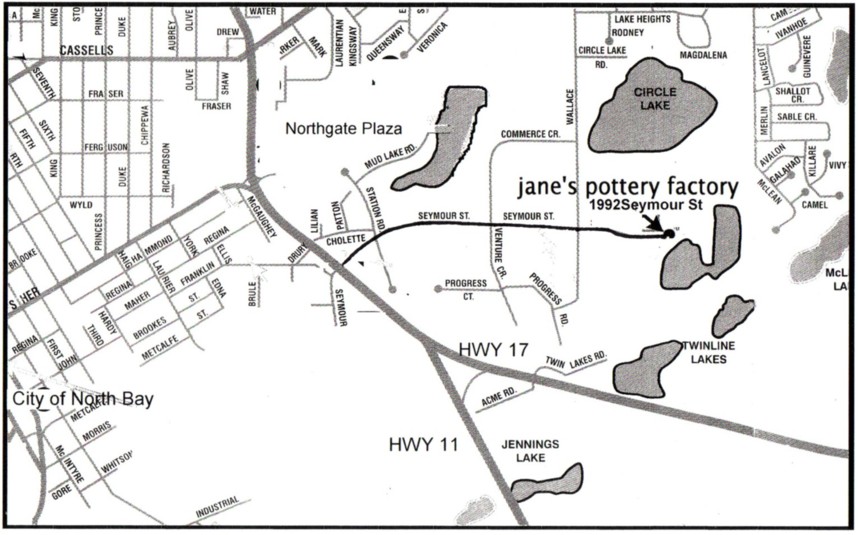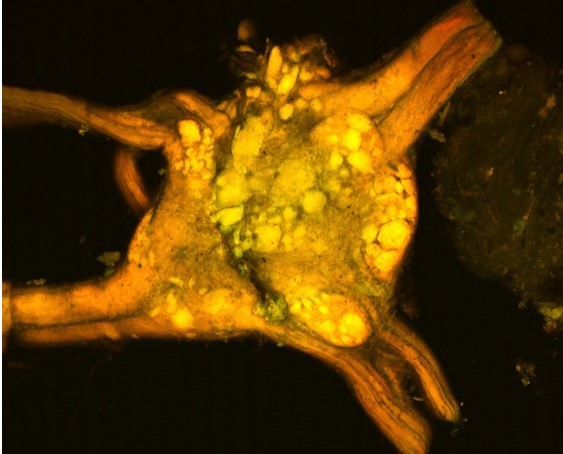
give us your contact phone number and we will call you a soon as possible
or phone us at: 705 - 476 - 7369
1992 Seymour Street
North Bay, ON, Canada P1A 0E3 This is also the home of Jane's Pottery Factory Incorporated 
visit our companion website: OR www.janespottery.ca
 BioArt Works Inc
BioArt Works Inc
A word about our Biologist and Founder : Jane Agnew BA Fine Arts, BSc Biology Chemistry minor, Certificate Neuroscience
At 64 years of age, I returned to university with the intention of developing an understanding of the physiology of the joint disorders that accompany Lyme disease.
This search led me to an honours degree in Biology with a minor in Chemistry. My fourth year thesis investigated the ability of Cinchona alkaloids and two laboratory produced analogues to block potassium channels in neurons. In order to visualize this blocking process in vivo, I developed a technique for exposing leeches to the compound and measuring behaviour as well as extracting the recently exposed neural cord and dying the dissected neural tissue. The tissue was dyed by driving fluorescent labeled potassium ions through neural tissue using the neuron's electrical potential in the neural ganglia of leech Nephalopsis obscura ( our logo image ). Further research in this area is proposed, in which the effects of (-)-quinine will be compared to propranolol and a methylated analogue of (-)-quinine. The dangerous production of superoxide radicals by the methylated (-)-quinine must first be tested. If the methylation does not impede the production of superoxide radical then quinine must be abandoned as a possible medication.
In completing the degree requirements, I continued the investigation of Cinchona alkaloids with a photosensitivity study of -(-)quinine. In this research I established through NMR analysis that the quinoline and quinuclidine structures remain intact and joined by a single carbon so that the superoxide radical produced through UV exposure comprises the release of the hydroxyl group on the central carbon.
These results suggested that the methylation of this hydroxyl group would stabilize the quinine structure and interfere with the mechanism for its release of a superoxid anion. It is my opinion that beta blockers such as quinine and propranolol are important meuromodulators that may affect bone remodeleng in respose to hypothalmus activation.
This work led me to complete the requirements of a Neuroscience Certificate. As final requirements, I was involved in a directed study in which I was challenged to develop methods of visualizing neurons within the neural system of planaria Dugesia tigrani . This method adapts the rapid Golgi-Cox method developed by Ranjan et al. 2012 for rat brain slices. The technique requires slicing the fine planarian tissue with cryatome slicing equipment without the use of fixatives. This research has confirmed Ranjan's results implicating aldehydes and water replacement fixatives as impediments to Golgi-Cox staining. Further imaging uses the millevolts derived from the reaction produced by the chromate/dichromate equalibrium with the addition of electrical potential created by mercuric chloride in an aqueous solution of electrolytes.
My recently acquired strengths are in chemistry and tissue staining, but my career as a potter and sculptor in the 35 years prior to this second career has given me a strong background in the mechanics of process control and adaptation of processes in innovative ways that allow development of result driven methodologie. Artists spend a lifetime courting serendipity and this ability to watch for and adapt spontaneously to arising opportunities lends itself well to scientific research.
